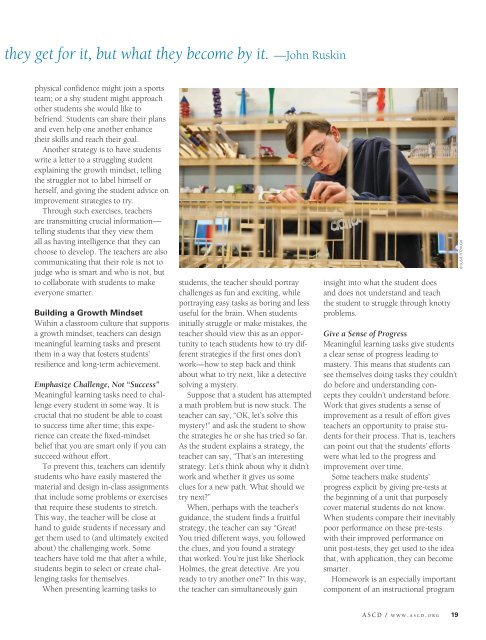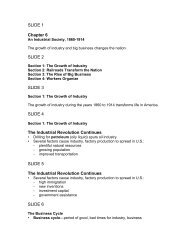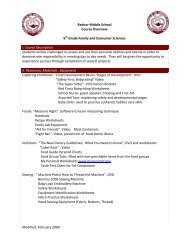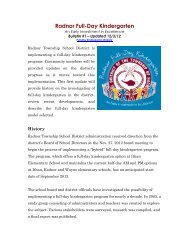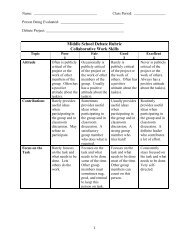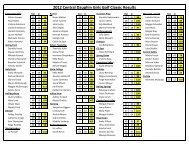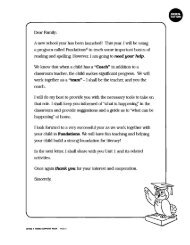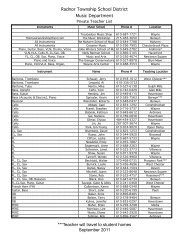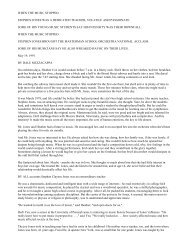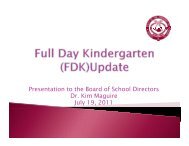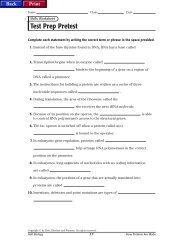Self-Esteem and Student Achievement
Self-Esteem and Student Achievement
Self-Esteem and Student Achievement
Create successful ePaper yourself
Turn your PDF publications into a flip-book with our unique Google optimized e-Paper software.
they get for it, but what they become by it. —John Ruskinphysical confidence might join a sportsteam; or a shy student might approachother students she would like tobefriend. <strong>Student</strong>s can share their plans<strong>and</strong> even help one another enhancetheir skills <strong>and</strong> reach their goal.Another strategy is to have studentswrite a letter to a struggling studentexplaining the growth mindset, tellingthe struggler not to label himself orherself, <strong>and</strong> giving the student advice onimprovement strategies to try.Through such exercises, teachersare transmitting crucial information—telling students that they view themall as having intelligence that they canchoose to develop. The teachers are alsocommunicating that their role is not tojudge who is smart <strong>and</strong> who is not, butto collaborate with students to makeeveryone smarter.Building a Growth MindsetWithin a classroom culture that supportsa growth mindset, teachers can designmeaningful learning tasks <strong>and</strong> presentthem in a way that fosters students’resilience <strong>and</strong> long-term achievement.Emphasize Challenge, Not “Success”Meaningful learning tasks need to challengeevery student in some way. It iscrucial that no student be able to coastto success time after time; this experiencecan create the fixed-mindsetbelief that you are smart only if you cansucceed without effort.To prevent this, teachers can identifystudents who have easily mastered thematerial <strong>and</strong> design in-class assignmentsthat include some problems or exercisesthat require these students to stretch.This way, the teacher will be close ath<strong>and</strong> to guide students if necessary <strong>and</strong>get them used to (<strong>and</strong> ultimately excitedabout) the challenging work. Someteachers have told me that after a while,students begin to select or create challengingtasks for themselves.When presenting learning tasks tostudents, the teacher should portraychallenges as fun <strong>and</strong> exciting, whileportraying easy tasks as boring <strong>and</strong> lessuseful for the brain. When studentsinitially struggle or make mistakes, theteacher should view this as an opportunityto teach students how to try differentstrategies if the first ones don’twork—how to step back <strong>and</strong> thinkabout what to try next, like a detectivesolving a mystery.Suppose that a student has attempteda math problem but is now stuck. Theteacher can say, “OK, let’s solve thismystery!” <strong>and</strong> ask the student to showthe strategies he or she has tried so far.As the student explains a strategy, theteacher can say, “That’s an interestingstrategy. Let’s think about why it didn’twork <strong>and</strong> whether it gives us someclues for a new path. What should wetry next?”When, perhaps with the teacher’sguidance, the student finds a fruitfulstrategy, the teacher can say “Great!You tried different ways, you followedthe clues, <strong>and</strong> you found a strategythat worked. You’re just like SherlockHolmes, the great detective. Are youready to try another one?” In this way,the teacher can simultaneously gaininsight into what the student does<strong>and</strong> does not underst<strong>and</strong> <strong>and</strong> teachthe student to struggle through knottyproblems.Give a Sense of ProgressMeaningful learning tasks give studentsa clear sense of progress leading tomastery. This means that students cansee themselves doing tasks they couldn’tdo before <strong>and</strong> underst<strong>and</strong>ing conceptsthey couldn’t underst<strong>and</strong> before.Work that gives students a sense ofimprovement as a result of effort givesteachers an opportunity to praise studentsfor their process. That is, teacherscan point out that the students’ effortswere what led to the progress <strong>and</strong>improvement over time.Some teachers make students’progress explicit by giving pre-tests atthe beginning of a unit that purposelycover material students do not know.When students compare their inevitablypoor performance on these pre-testswith their improved performance onunit post-tests, they get used to the ideathat, with application, they can becomesmarter.Homework is an especially importantcomponent of an instructional program© SUSIE FITZHUGHA S C D / w w w . a s c d . o r g 19


